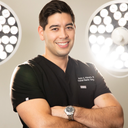Excess upper eyelid skin runs in both sides of my family, and most have impaired vision by their late 50s. At 37, my upper eyelids hang over my lashes; the excess skin is about 1/2" when pinched with no apparent fat, just skin sagging over lashes. I'm used to it, but there is definitely an upper black line in my vision where the lids are pressing down, and I can "see" my lashes at all times.
What are the usual requirements to gain insurance approval with a good PPO? Is this even possible, or is it always considered cosmetic?
Answers (88)
From board-certified doctors and trusted medical professionals
Dr. Susan D. Vasko, MD, FACS

Dr. Susan D. Vasko, MD, FACS
Board Certified Plastic Surgeon
Answer
Dr. Stephen T. Greenberg, MD, FACS

Dr. Stephen T. Greenberg, MD, FACS
Board Certified Plastic Surgeon
Answer
Dr. Benjamin Caughlin, MD, FACS

Dr. Benjamin Caughlin, MD, FACS
Board Certified Facial Plastic Surgeon
Answer
Dr. Kyle Kimura, MD

Dr. Kyle Kimura, MD
Board Certified Facial Plastic Surgeon
Answer
Dr. David K. Isaacs, MD, FACS

Dr. David K. Isaacs, MD, FACS
Oculoplastic Surgeon, Board Certified in Ophthalmology
Answer
Dr. Adam Bryce Weinfeld, MD

Dr. Adam Bryce Weinfeld, MD
Board Certified Plastic Surgeon
Answer
Dr. Matthew Richardson, MD

Dr. Matthew Richardson, MD
Board Certified Facial Plastic Surgeon
Answer
Dr. Scott Trimas, MD

Dr. Scott Trimas, MD
Board Certified Facial Plastic Surgeon
Answer
Dr. Peter Lee, MD, FACS

Dr. Peter Lee, MD, FACS
Board Certified Plastic Surgeon
Answer
Dr. David W. Rodwell III, MD

Dr. David W. Rodwell III, MD
Board Certified Facial Plastic Surgeon
Answer
Dr. Robert Deeb, MD

Dr. Robert Deeb, MD
Board Certified Facial Plastic Surgeon
Answer
More Eyelid Surgery Questions
See all Eyelid Surgery Q&AWE SEND PRETTY
EMAILS
What’s trending? Who’s turning heads? Which TikTok myths need busting? We’ve got you. No fluff, no gatekeeping—just real talk. Get our free, unfiltered newsletter.